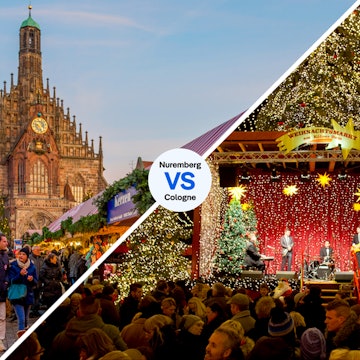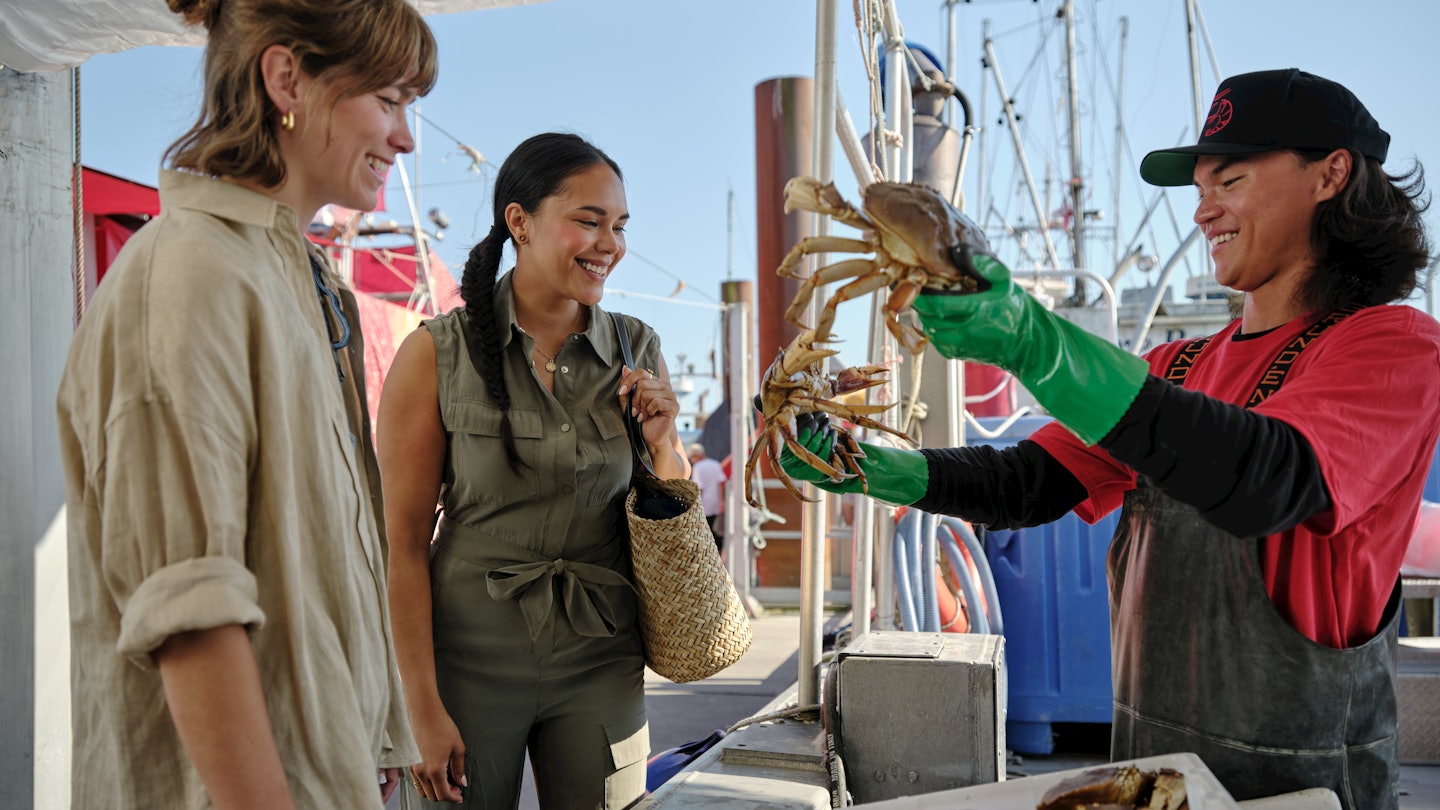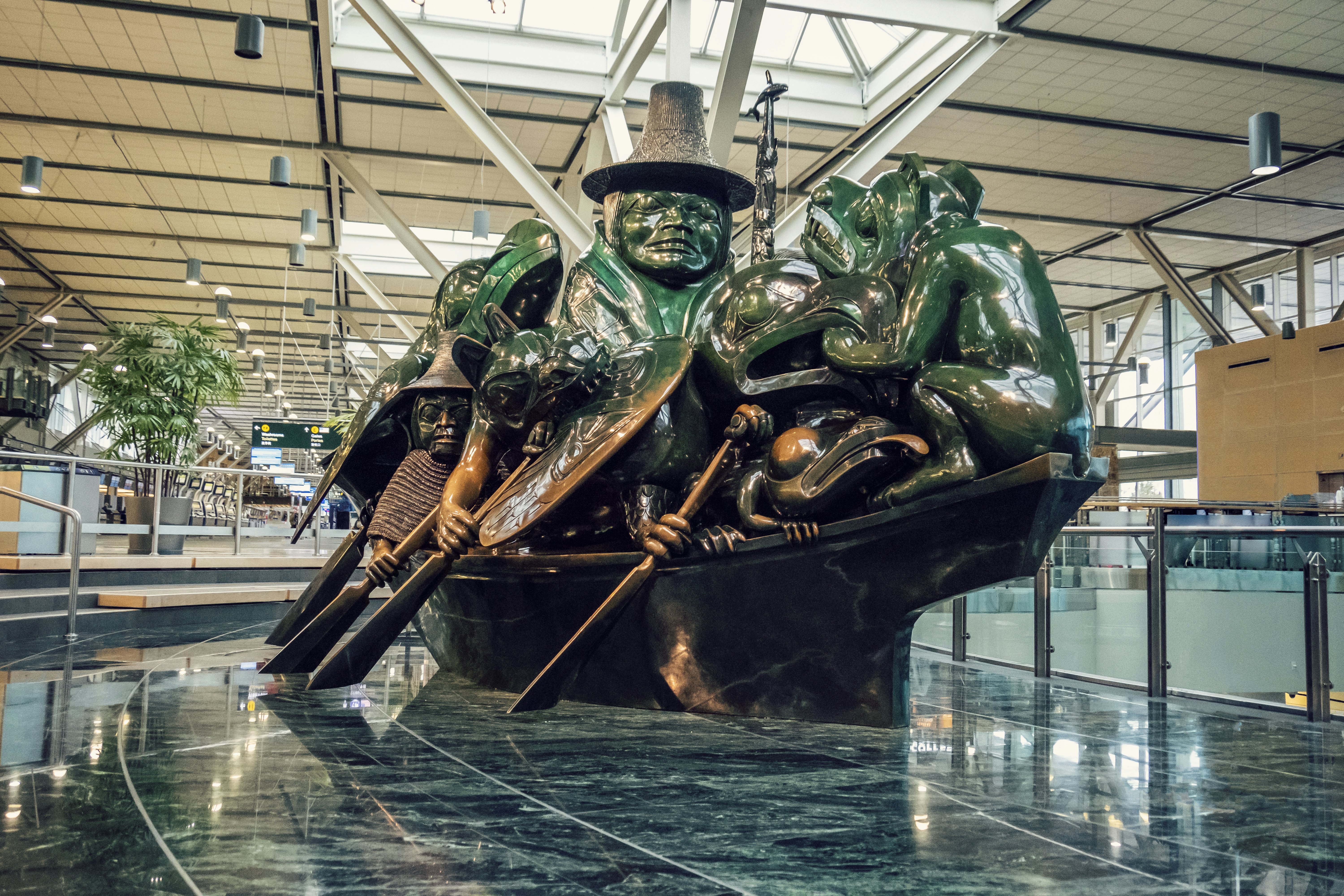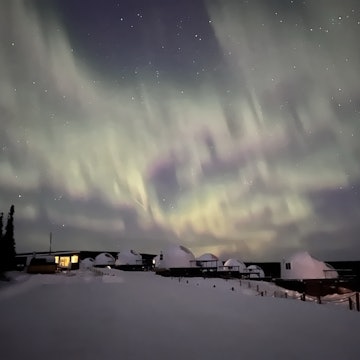
Discover authentic food, shopping and culture in Richmond, B.C.
Sponsored by

Mar 6, 2025 • 5 min read

Steveston Harbor, with its riverfront boardwalks and gabled wooden storefronts, shows off the best of Richmond's dining, history and shopping scenes. Courtesy of Tourism Richmond
The city of Richmond, British Columbia – only a 20-minute transit train ride from downtown Vancouver – serves up a huge menu of diverse and authentic West Coast experiences.
Fringed by the Fraser River and the Pacific Ocean, it’s an inviting destination for unique dining, heritage and shopping scenes. The trick is to know exactly where to go – both on and off the beaten track.


Explore world-class Asian flavors
Richmond is the fourth largest city in B.C. With many locals tracing their lineage to China, Japan, South Korea and beyond, it’s home to North America’s largest and most sophisticated Asian dining scene – comprising hundreds of intriguing eateries and countless culinary approaches.
Hungry diners with adventurous appetites can sample everything from hearty ramen to spicy laksa, silky rice rolls, crispy-skinned Hong Kong barbecue, make-at-your-table hotpot feasts and fresh sushi and sashimi crafted from B.C.’s celebrated sustainable seafood.
But while tracking down award-winning restaurants like Jade Seafood, The Fish Man and Baan Lao Fine Thai Cuisine might take some sleuthing, exploring local food courts is an easy way to dive in. Perhaps the most authentic is on the second floor of the Richmond Public Market, a chatty, easygoing dining area serving good-value Szechuan, Taiwanese and bubble tea treats.
Food courts aren't the only easy way to navigate Richmond’s multi-layered dining scene. The self-guided Dumpling Trail points you to 17 tasty eateries located in and around the city center – each offering delectable indulgences such as velvet-soft gyoza, pan-fried pork buns and crispy wu gok dim sum. Just don't try to visit them all in one day.

Looking for more ways to dine like a local? From April to October, the weekend-only Richmond Night Market is the largest of its kind in Canada. And while it's a great place to find novelties and bargain souvenir T-shirts, its 100 or so steam-shrouded food stands draw the lion’s share of attention from ravenous visitors. New to the list of attractions this year, a 600-foot zipline will whisk visitors over the stalls and among the lights.
The famously inventive dishes at the market – currently celebrating its 25th anniversary – generate lots of giddy social media excitement. In recent years, these eye-popping creations have ranged from ramen donuts to sushi hotdogs to taro ice-cream bars and rainbow-striped grilled cheese sandwiches. Arriving hungry is essential.


Dive into the seafood scene
Much of Richmond’s thriving culinary scene relies on B.C.’s quality fresh-caught seafood. You can head straight to the source of this salty city backstory in Steveston Village, a scenic and historic hamlet located on Richmond’s southern shoreline.
Founded in the 1800s, Steveston – complete with riverfront boardwalks and gabled wooden storefronts – has long been the home port for Canada’s West Coast fishing fleet. With generations of fishing families based there, its bustling Fisherman’s Wharf area is a must-visit spot. On most days, you’ll find fishers selling salmon, halibut, sea urchin and more from the backs of their boats.
Drop by in May or June and the region’s beloved spot prawns will also be on the menu – along with the Steveston Spot Prawn & Seafood Celebration – a festival comprising live music, cooking demonstrations and more. It’s one of several popular annual events worth timing your Richmond visit for. Consider the city’s colorful and kinetic Chinese New Year celebrations; August’s family-friendly Richmond Maritime Festival; and Winter in the Village, a multi-week Steveston extravaganza of holiday happenings.


Go time traveling through historic sites
Heritage fans should save time for Steveston’s two National Historic Sites. Britannia Shipyards is a boardwalk complex of preserved bunkhouses and boatbuilding sheds that recall the generations of fishing industry workers who arrived from Asia.
The Gulf of Georgia Cannery brings to life one of B.C.’s biggest salmon-processing plants. Operating from 1894 to 1979, it’s now a fascinating museum that shows what working in the seafood industry was really like. You’ll learn all about the relentlessly noisy canning line as well as jobs with strange-sounding titles like “slimer.”
These aren't the only heritage attractions in and around the village. London Farm is a preserved 19th-century farmhouse framed by flower gardens and a park full of agricultural exhibits. You can also climb aboard the Steveston Tram, a restored 1913 tramcar housed in its own pavilion.
The International Buddhist Temple is a beautiful, ancient-looking complex inspired by classical Chinese architecture. It’s hard not to be drawn into its tranquil maze of ponds, gardens and adornments, whatever your religious persuasion. Check out the detailed 325-foot Buddha mural and the golden, multi-armed Bodhisattva figure with its 1,000 hands before heading up the marble steps into the zen-like Gracious Hall.

A center for art and shopping
In the heart of Steveston Village, the Steveston Museum and Post Office houses exhibits on the region’s colorful past. It also has an onsite pop-up store showcasing unique creations by local artists. Don’t end your shopping expedition there, though. Moncton Street and its tributaries are lined with cool independent boutiques worth visiting – including A Monkey Tree and Village Books & Coffee House.
Back in Richmond’s city center, the shopping experience couldn't be more different. A visit to Aberdeen Centre is like stepping into a shiny Hong Kong shopping mall complete with Asian-brand boutiques and restaurants. A short walk away, Parker Place mall has homespun Asian authenticity and a friendly food court lined with intriguing mom-and-pop stands.
The city center is also home to the free Richmond Art Gallery. Focusing on contemporary exhibits, regular tours share space with brilliantly curated shows that change every few weeks, while you can also time your visit for special events.
Richmond has a famously active public art program and you’ll spot dozens of photo-ready examples around the city – from statues of firefighters to marine-themed murals and from monumental Indigenous creations to oversized salmon water features. You can track them all down or plan a self-guided neighborhood art walk via Richmond’s tours, maps and art registry. It’s a great way to take the cultural pulse of this under-the-radar West Coast city.
Sponsored by Tourism Richmond
As a travel entertainment and inspirational media outlet, we sometimes incorporate brand sponsors into our efforts. This activity is clearly labeled across our platforms.
This story was crafted collaboratively between Tourism Richmond and Lonely Planet. Both parties provided research and curated content to produce this story. We disclose when information isn’t ours.
With sponsored content, both Lonely Planet and our brand partners have specific responsibilities:
-
Brand partner
Determines the concept, provides briefing, research material, and may provide feedback.
-
Lonely Planet
We provide expertise, firsthand insights, and verify with third-party sources when needed.















